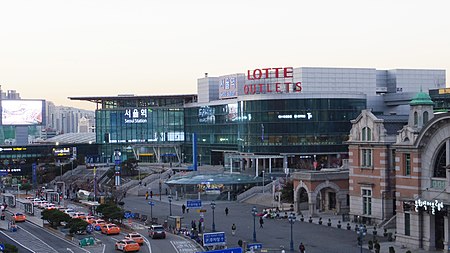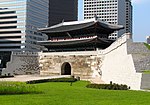Seoul Station
1925 establishments in KoreaHistoric Sites of South KoreaKorea Train Express stationsMetro stations in Jung District, SeoulMetro stations in Yongsan District ... and 4 more
Railway stations in SeoulRailway stations opened in 1925Seoul Metropolitan Subway stationsUse mdy dates from November 2015

Seoul Station is a major railway station in Seoul, the capital of South Korea. The station is served by the Korail Intercity Lines and the commuter trains of the Seoul Metropolitan Subway.
Excerpt from the Wikipedia article Seoul Station (License: CC BY-SA 3.0, Authors, Images).Seoul Station
Hangang-daero, Seoul Namyeong-dong
Geographical coordinates (GPS) Address Nearby Places Show on map
Geographical coordinates (GPS)
| Latitude | Longitude |
|---|---|
| N 37.55319 ° | E 126.9726 ° |
Address
센트럴프라자
Hangang-daero 391
04320 Seoul, Namyeong-dong
South Korea
Open on Google Maps







